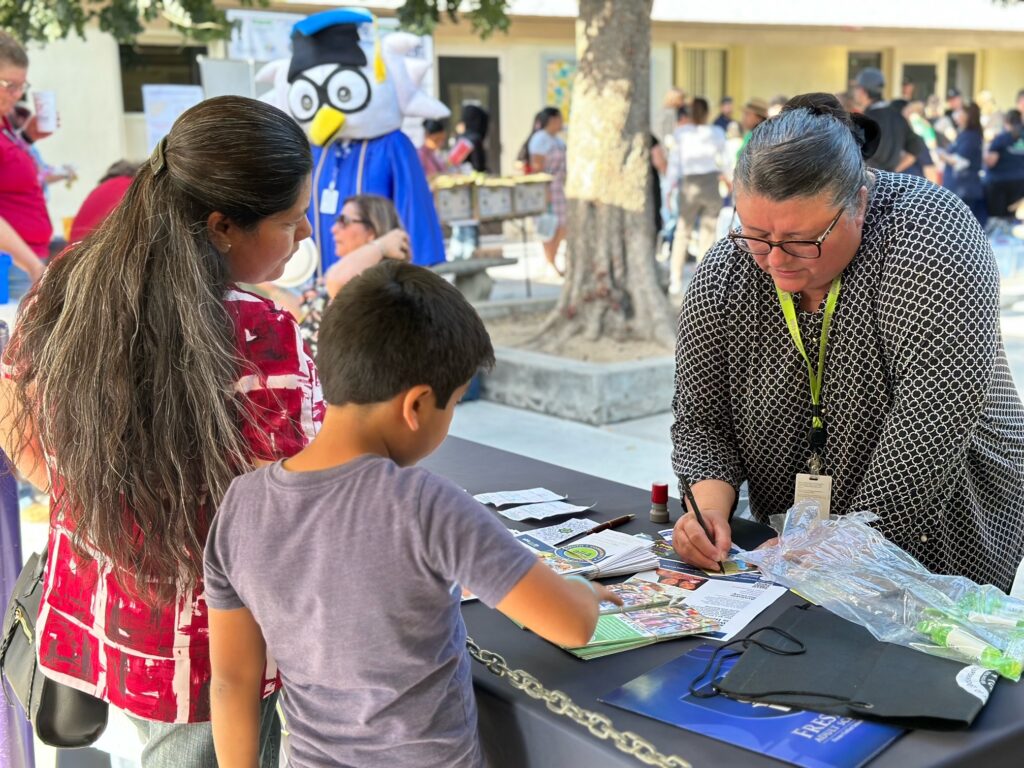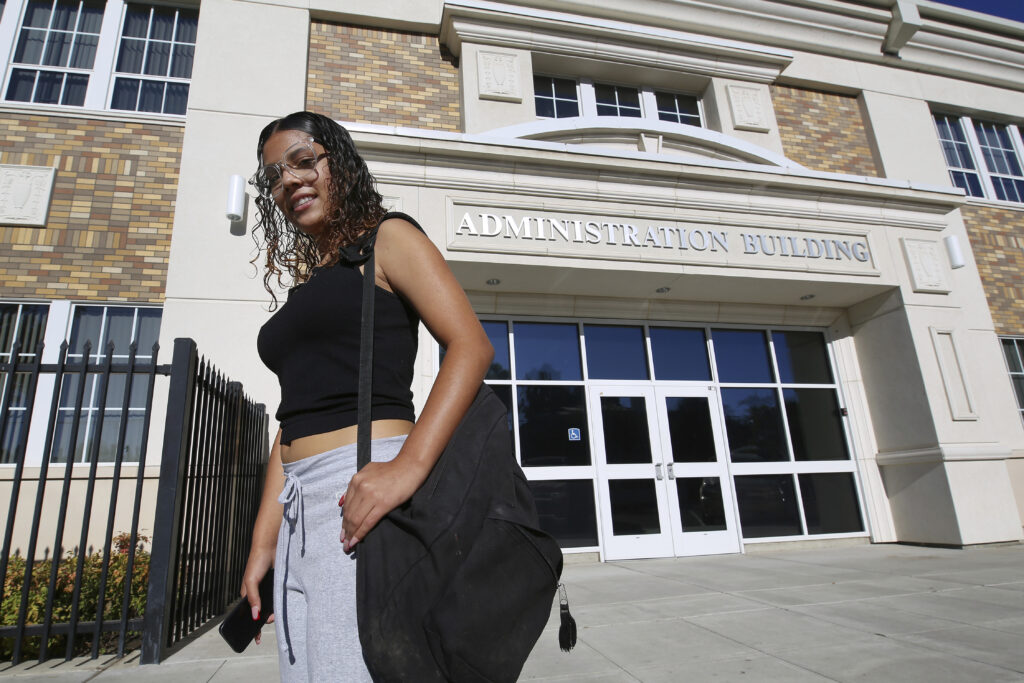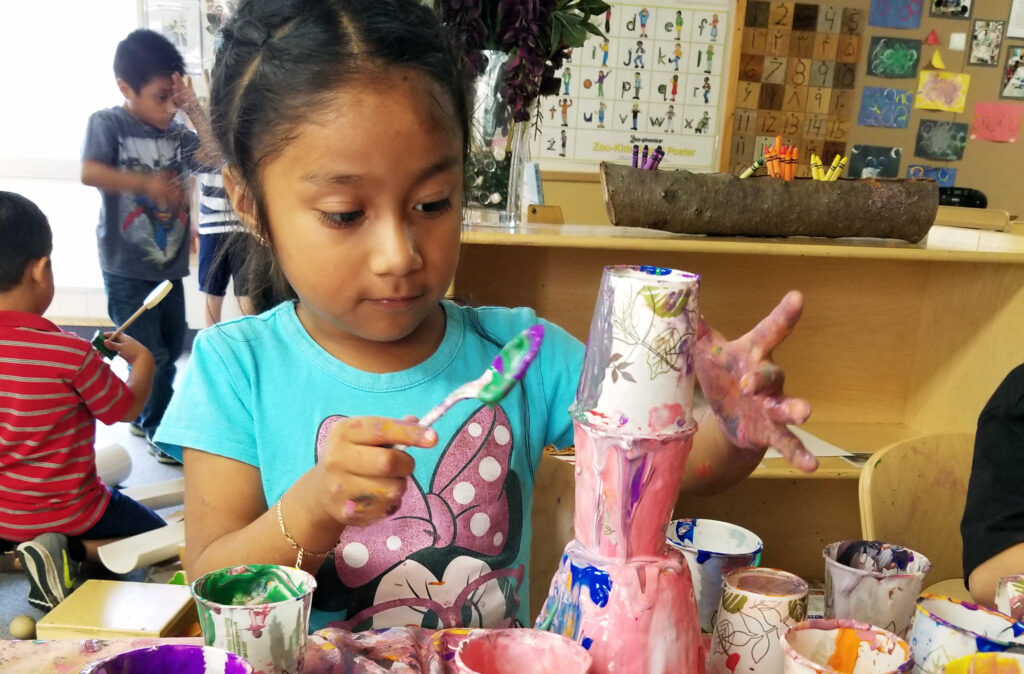Leading literacy experts agreed that more young California students need to learn how to read, but they couldn’t reach a concensus on how to make it happen.
While several participants in EdSource’s May 14 Roundtable discussion, “Getting California Kids to Read: What Will It Take?” suggested they would work together to pass a literacy bill, they also acknowledged that their disagreements remain in the details.
Moderated by EdSource reporters John Fensterwald and Zaidee Stavely, the lively hourlong roundtable focused on how to achieve literacy for California children. The panel grappled with a myriad of thorny issues including state policy dynamics, the needs of dual-language learners and long-standing disagreements over how best to teach reading amid rising illiteracy rates.
Putting the needs of children and their teachers first should be the North Star when trying to solve the deepening literacy crisis, panelists agreed.
The bottom line is grim. In 2023, just 43% of California students were reading at grade level by third grade, state data shows. Worse still, far fewer Black and Latino students met that standard.
“This is also a matter of civil rights,” said Kareem Weaver, an NAACP activist, co-founder of the literacy advocacy group FULCRUM and a key figure in the “The Right to Read” documentary, who has long argued that literacy is a matter of social justice too often obscured by esoteric debates about pedagogy. “Kids need access to prepared teachers, and communities like ours, I feel like we’re bearing the brunt.”
Against the backdrop of an ongoing battle over state policy and crippling pandemic learning loss, the stakes are perilously high for children who graduate from high school unable to read. They struggle to navigate the world, from job applications to rental agreements, and studies point to the connection between illiteracy and incarceration.
“We’re counting on reasonable people to come together and figure this stuff out,” said Weaver. “These decisions that are made, they do fall on real kids, real communities.”
What will it take to make sure that all kids, including English learners, read by third grade?
While the state has taken some steps to get all kids to grade level, such as funding for tutors and testing students for dyslexia, a reading disability, there is no comprehensive plan. Given local control policies, districts decide how reading is taught, and many use methods that have been debunked by some experts. That’s a problem because consensus is key to reform, experts say.
“You want to make sure that whether you’re in the district office or you are a teacher in the classroom, you’re singing the same song,” said Penny Schwinn, former Tennessee education commissioner, who led that state’s renowned reading reform initiative, Reading 360. “The curricular materials are aligned, the professional development is aligned. All of that has to row in the same direction. Otherwise, you have people who are all doing different things in different ways and kids get confused.”
What’s standing in the way of systemic change in California? One key question underpinning this debate is whether a statewide approach can meet the needs of English learners.
“I do have to say that many times students and biliteracy programs are not included in the literacy conversation,” said Martha Hernández, executive director of Californians Together, an advocacy group. “Our literacy policy must have a focus on student-responsive teaching. I will say that multi-literacy is really the way of the future, particularly for our diverse state in this 21st century. It must be a cornerstone of literacy, biliteracy education policy in California.”
Another key obstacle is the resistance to any top-down mandate that the state imposes on schools.
“When you do not have educators at the center of this, along with parents and students, it is set up to fail,” said David B. Goldberg, president of the California Teachers Association. “Frankly, going and passing legislation that reinforces a top-down approach, it’s antithetical to what all of our goals are about: really having all students succeed.”
In hopes of giving the state a comprehensive plan focusing on phonics and other skills like vocabulary and reading comprehension, supporters backed Assembly Bill 2222 authored by Assemblymember Blanca Rubio, D-Baldwin Park. It also had the support of the California State PTA, state NAACP and more than 50 other organizations. But the bill died last month in committee before it could even get a hearing, succumbing to opposition from the state teachers union and English language advocates.
Getting a literacy bill passed, as hard as that may be, is just the beginning, experts warn.
“That is the easiest part of the process,” said Schwinn. “You can pass legislation, but implementation is the hardest thing you’ll ever do, because you have to win hearts and minds and you have to make sure you do it with respect and make sure you are operating with extreme dignity and professionalism and with a high quality bar for the people who are in the profession every day.”
In a state as big and diverse as California, consensus can be elusive, noted Claude Goldenberg, emeritus professor of education in the Graduate School of Education at Stanford University. While almost everyone agrees that literacy instruction should be culturally relevant and content-rich as well as foundational, there remain disagreements about what exactly that looks like in the classroom.
“One of the big problems is when we speak at this level, there’s a lot of agreement,” said Goldenberg, “but we know the devil is in the details. … Time is limited in schools. Six hours tops, maybe six and a half, maybe five and a quarter. … We’ve got to make some choices and we’ve got to make some priorities at different stages of reading development. And that’s where the conversation kind of breaks down, because it gets very weedy, it gets very difficult. … We end up looking like we agree, but the subtext here is we’re still disagreeing.”
One of the big hurdles is over whether the state should embrace what is known as the science of reading, which refers to research on how the brain learns how to read. In response to a question from moderator Fensterwald on what is irrefutable about that research, Goldenberg said there was no doubt about how children need to be taught how to read.
“We have research on what to do when kids are having difficulty getting traction in beginning reading, whether they’re in Spanish reading programs or in English reading programs as English language learners,” said Goldenberg. “We know that there’s a reason they’re called foundational literacy skills. Because if you don’t have these skills, it is extremely difficult, if not impossible, to become literate.”
While she agreed on many broad themes, Hernandez pointed out that children have differing needs.
“Of course, you know, science is never settled,” said Hernandez. “What works for one student may not work for another.”
As the president of the state’s largest teachers union, Goldberg, for his part, noted that any approach that does not center the expertise of teachers is likely to be a non-starter. Teachers must have a seat at the table, he argued.
“We have had decades of disinvestment in public education,” said Goldberg. “So when we hear educators, when our voice is constantly not listened to … when educators do not feel like their agency is respected, like the fact that we are educating many kids with diverse language needs, all kinds of issues, not the flavor of the month … it has to have deep engagement at the very base level to get educators to buy in.”
He is also concerned that the voices of students of color will be overlooked in the debate.
“As a bilingual educator, how it comes across is that bilingual students, students of color in particular, their needs are always being pushed into silence,” said Goldberg. “And so I hear what you’re saying, but if these programs have any legitimacy, they must put the needs of the most vulnerable people at the center.”
Megan Potente, co-state director of Decoding Dyslexia CA, an advocacy group, suggested that a statewide literacy initiative could be more akin to guardrails than a mandate. Certainly, many other states, including those with substantial bilingual populations, from Florida and Mississippi to Tennessee, have already launched comprehensive state policy reforms to change the way reading is taught, with impressive results.
“It’s not about one-size-fits-all because, just like in other states, there would be many choices of reading professional development and instructional programs,” said Potente. “And the choices would be vetted by state experts to ensure that they provide what California kids need to learn.”
She argues that it’s actually the most vulnerable kids who may have the most to gain from a comprehensive literacy plan. Her organization fought long and hard for dyslexia screening legislation, for example, that only recently passed.
“It took eight years and four bills to make it happen. We are in this for the long haul because we know that matters,” said Potente, a veteran teacher and the mother of a dyslexic child. “We talk about structured literacy a lot. … It really needs to be the standard of care. Non-negotiable. Why is it not? That’s really what sticks with me. Why is it so hard to find access to evidence-based instruction that works for all kids? Why?”


























